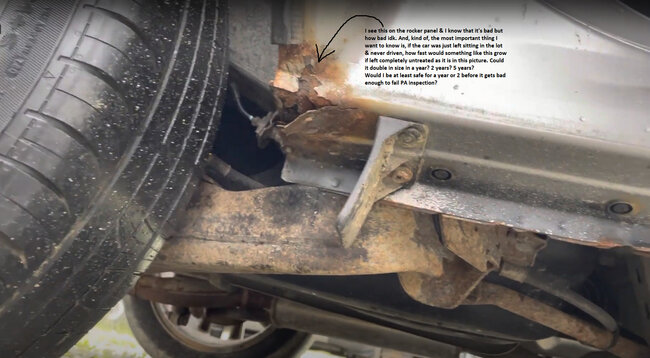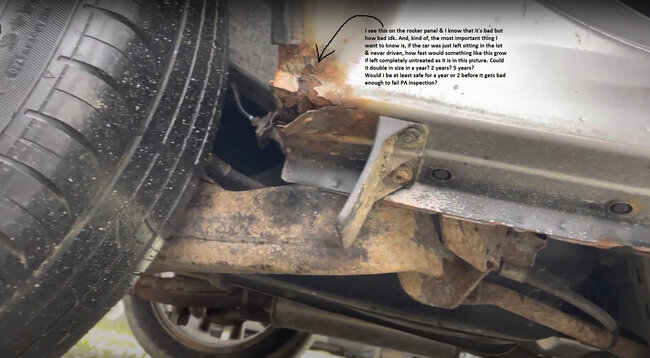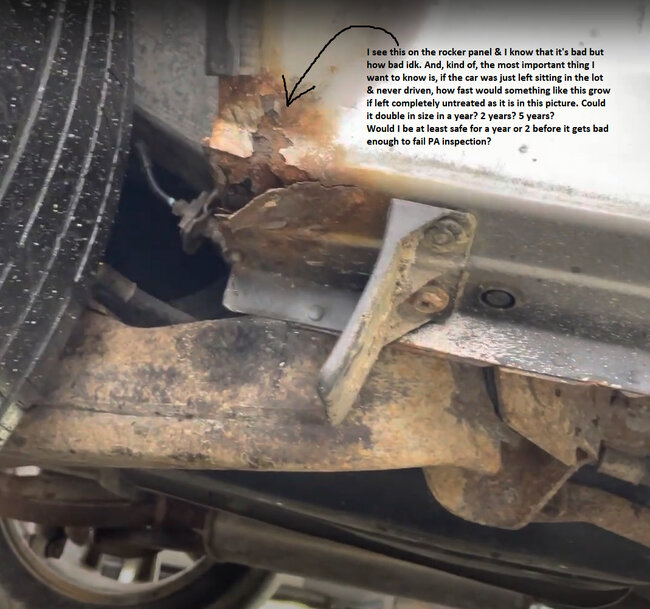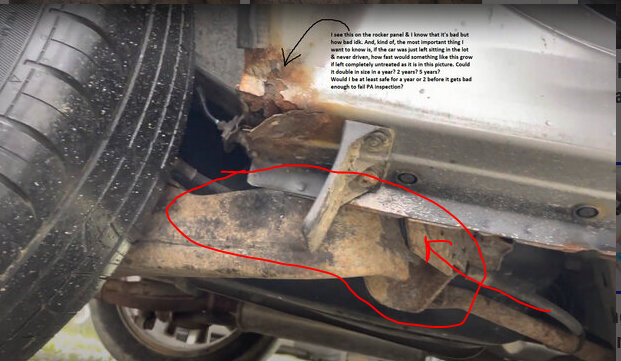Hi:
I live in western PA near Pittsburgh. I do have both my emission and safety inspection licenses. Here is the thing. You are not allowed to have any rust holes where it can enter the passenger compartment, so in this case, it already needs to be repaired for a state safety inspection.
As far as the amount of time it needs to get to a point where it becomes structurally unsound is very difficult to say. There are many variables that cause rust to happen quickly. One variable is allowing the vehicle to sit undriven. When that happens, the vehicle undercarriage never really has any airflow and stays damp. Additionally, any time you park a vehicle on a dirt or gravel driveway, which allows moisture to come out of the ground and attack the undercarriage. The worst thing would be to park it over the grass and not move it.
So, the idea of how long it will take is tough. If you just let it sit the way it is presently, you will see little change over the period of a year, but it will change. Don't laugh but if you don't mind doing it, spray used motor oil on the rusted area and up inside the rocker and then drive it on a dusty road. The dust will stick to the oil keeping it in place. That will slow the rusting process. Additionally, there is a product called Fluid Film that is excellent at preventing and slowing rust. It comes in an aerosol can similar to a paint can. You could check the area and spray that on it to help slow the rusting process also. You can get it on Amazon or at most parts stores.
All in all, it is difficult to provide a specific time period simply because there are so many different variables. Although I don't feel the vehicle is structurally compromised at this point, it would still fail state safety due to the possibility of exhaust fumes entering the vehicle. To pass, the hole needs to be covered and sealed. Some people would just throw body filler in it and that is fine.
Also, please keep in mind, I can't see anything under the vehicle. For example, the tracking bar/control arm bolts behind the rocker to the subframe. That is very important to keep solid. If rusted there, then is will become a safety issue. (See pic below)
I hope this helps. If you have other questions, please let me know.
Take care,
Joe
See pic below.
Image (Click to make bigger)
Friday, June 23rd, 2023 AT 7:50 PM






